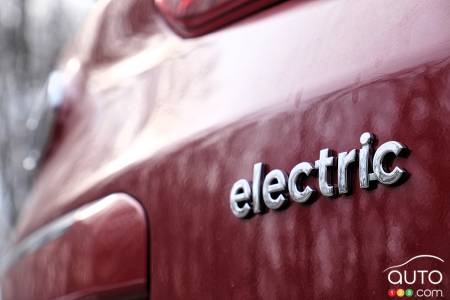One of the most common questions regarding electric vehicles is about battery longevity. The prospect of having to replace the battery during the life of their vehicle has slowed down the enthusiasm of some consumers, who understandably fear the costs involved. This reality, along with access to charging stations, tops the list of factors that make consumers hesitate to “go electric”.
According to a study carried out by researchers at Stanford University (SLAC-Stanford Battery Center division), however, the real-life driving conditions to which batteries are subjected are less degenerative than those they’re subjected to in laboratory studies.
As a result, the batteries found in electric vehicles last longer than originally anticipated.
Already, manufacturers generally guarantee them for eight years, which means their life cycle is much longer. Some experts are talking about 12 to 15 years. It could be even more than that.
Of course, we're still in the realm of uncertainty, since the market for mass-market electric vehicles is not yet 15 years old.

The study
Researchers monitored battery health parameters after two different types of recharging and discharging.
The first type is the most commonly used in laboratories, where batteries are recharged and discharged using a constant current. The second type of recharging and discharging better reproduces real-life conditions, with peaks of activity and dead time, known as dynamic cycles.
According to the article published on December 9 in the scientific journal Nature Energy, and as reported by Automotive News, researchers found that batteries subjected to more dynamic charging and discharging cycles achieved better results in terms of battery health parameters, such as lithium quantity or electrode degradation.
“If you want accurate estimators of your battery's health, you need to rely on data representative of real-world conditions,” said Alexis Geslin, PhD candidate at Stanford and lead author of the paper.
Geslin said his team didn't know whether manufacturers were using models or real, real-time data when displaying battery condition on in-vehicle screens, but said most tests used the most degenerative laboratory conditions.
Normally, a constant current is used to test the impact of a new battery. This could mean that the automotive industry has been evaluating new battery characteristics using incomplete information.
“In addition to the fact that it's a very constant current, laboratory tests are also accelerated. They are not representative of reality,” he said.
The researchers applied four discharge profiles to 92 lithium-ion batteries over a two-year period. They found that the more realistic the charging and discharging of the battery, the better its state of health.
No doubt further studies will be carried out, but these initial results could serve to reassure many people.






